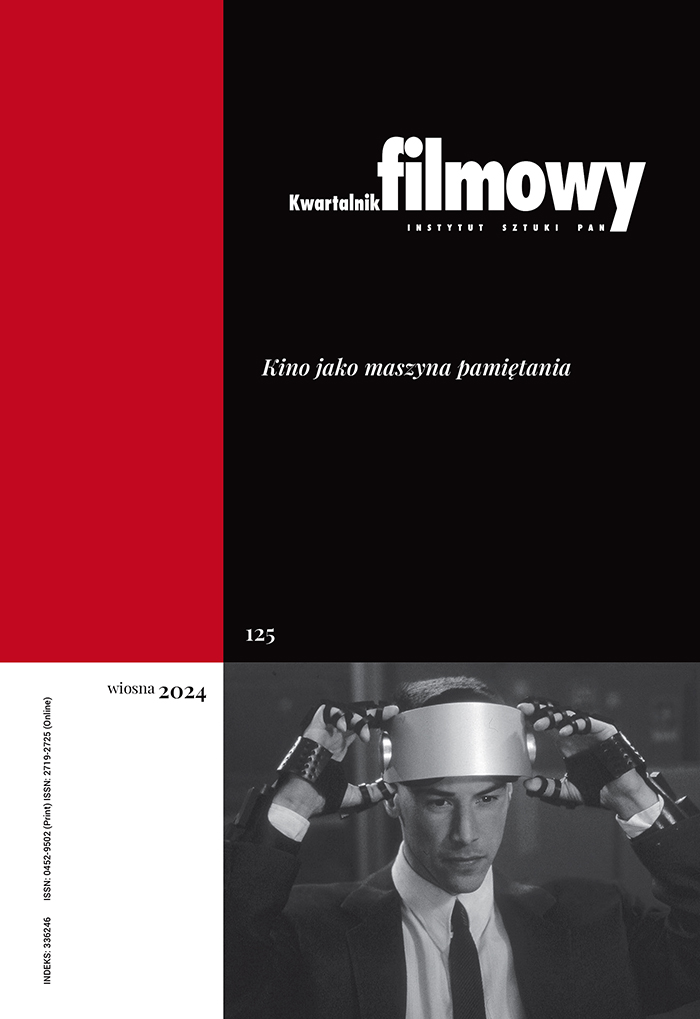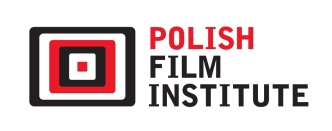“Katyń” and “General »Nil«”: A (Long) Twilight of the Paradigm
Abstract
This paper builds upon on insights of Artur Żmijewski on recent national blockbusters contained in a volume of The Polish Cinema (Kino polskie) from 1989 to 2009: A Critical history. The insights go beyond the generally accepted views on those films. The author then examines the films Katyń and General “Nil” as phenomena reflecting the kind of “posthumous life” of the romantic paradigm of Polish culture buried nearly two decades ago by Maria Janion, that for decades was seen as anachronistic, but that remains popular and is occasionally revived. He describes its fate in the culture of the Socialist People’s Republic of Poland (PRL), and also considers memoirs as historical sources. In the last part of the article Adamczak presents a new perspective of seeing Jerzy Skolimowski’s Essential Killing and Anna Jadowska’s General as attempts of breaking out of the magic circle of constantly renewing opposition between romanticism and anti-romanticism.
Keywords:
Andrzej Wajda, Ryszard Bugajski, Maria Janion, war cinema, RomanticismReferences
Baliszewski Dariusz, Trzecia strona medalu, wyd. Bukowy Las, Wrocław 2010, s. 187-195.
Google Scholar
Dąmbski Stefan, Egzekutor, wyd. Ośrodek Karta, Warszawa 2010, s. 13, 23, 52-53,78, 98, 104,105.
Google Scholar
Herbert Zbigniew, Raport z oblężonego Miasta i inne wiersze, wyd. Oficyna Literacka, Kraków 1983, s. 69.
Google Scholar
Janion Maria, Do Europy. Tak, ale z naszymi umarłymi, wyd. Sic!, Warszawa 2000.s. 22-23.
Google Scholar
Janion Maria, Płacz generała. Eseje o wojnie, wyd. drugie, Sic!, Warszawa 2007, s. 36-43, 328.
Google Scholar
Lubelski Tadeusz, Wzlot i upadek wspólnoty, czyli kino polskie 1975-1995, „Kino” 1997, nr 1.
Google Scholar
Miłosz Czesław, Zniewolony umysł, Wydawnictwo Literackie, Kraków 1999, s. 122.
Google Scholar
Piwińska Marta, Legenda romantyczna i szydercy, wyd. PIW, Warszawa 1973, s. 23-24, 369.
Google Scholar
Posiedzenie Sejmu RP z 14 marca 2002 roku. Źródło: http://orka2.sejm.gov.pl/Debata4.nsf/main/0831CED1 (dostęp: 21 grudnia 2010 r.)
Google Scholar
Sobolewski Tadeusz, Dziecko Peerelu: esej, dziennik, wyd. Sic!, Warszawa 2000, s. 14.
Google Scholar
Świda-Ziemba Hanna, Urwany lot: pokolenie inteligenckiej młodzieży powojennej w świetle listów i pamiętników z lat 1945-1948, Wydawnictwo Literackie, Kraków 2003.
Google Scholar
Wajda Andrzej, Wolni od czego?, „Kino” 1992, nr 1.
Google Scholar
Walas Teresa, „Zmierzch paradygmatu”…” — i co dalej?, w:.Zrozumieć swój czas. Kultura polska po komunizmie. Rekonesans, Wydawnictwo Literackie, Kraków, 2003, s. 176, 183, 197, 195, 199, 201.
Google Scholar
Zrozumieć swój czas. Kultura polska po komunizmie. Rekonesans, Wydawnictwo Literackie, Kraków 2003.
Google Scholar
Żmijewski Artur, „Katyń”, ”Karole”, „Świadectwo”, czyli praca ideologii, w: Kino polskie 1989-2009. Historia krytyczna, red. A. Wiśniewska, P. Marecki, wyd. Krytyki Politycznej, Warszawa 2010, s. 215-216.
Google Scholar
Authors
Marcin Adamczakkwartalnik.filmowy@ispan.pl
Adam Mickiewicz University in Poznan Poland
Adiunkt w Zakładzie Badań nad Kulturą Artystyczną Instytutu Kulturoznawstwa UAM w Poznaniu. Stypendysta Fundacji na Rzecz Nauki Polskiej (2010 i 2011). Laureat konkursu im. Krzysztofa Mętraka (2011). Autor monografii Globalne Hollywood, filmowa Europa i polskie kino po 1989 roku. Publikował także m.in. w „Odrze”, „Panoptikum”, „Kinie”, „Przeglądzie Zachodnim” i kilku tomach zbiorowych.
Statistics
Abstract views: 29PDF downloads: 10
License
Copyright (c) 2012 Marcin Adamczak

This work is licensed under a Creative Commons Attribution 4.0 International License.
The author grants the publisher a royalty-free non-exclusive licence (CC BY 4.0) to use the article in Kwartalnik Filmowy, retains full copyright, and agrees to identify the work as first having been published in Kwartalnik Filmowy should it be published or used again (download licence agreement). The journal is published under the CC BY 4.0 licence. By submitting an article, the author agrees to make it available under this licence.
In issues from 105-106 (2019) to 119 (2022) all articles were published under the CC BY-NC-ND 4.0 licence. During this period the authors granted a royalty-free non-exclusive licence (CC BY-ND 4.0) to use their article in „Kwartalnik Filmowy”, retained full copyright, and agreed to identify the work as first having been published in our journal should it be published or used again.
Most read articles by the same author(s)
- Marcin Adamczak, Sławomir Salamon, The Crumbling of Global Hollywood. Holdbacks, Distribution Windows and the Development of Streaming Platforms , Kwartalnik Filmowy: No. 108 (2019): Film Production and Distribution
- Marcin Adamczak, Konrad Klejsa, Contemporary Studies of Film Production and Distribution – Introduction , Kwartalnik Filmowy: No. 108 (2019): Film Production and Distribution
- Marcin Adamczak, About Modernism of Exhaustion , Kwartalnik Filmowy: No. 113 (2021): Film and Technology
- Marcin Adamczak, In Light of Bollywood and Kollywood: Differences between the Production Cultures of Polish and Indian Film Industry , Kwartalnik Filmowy: No. 120 (2022): Film Culture
- Marcin Adamczak, About Non-Western Colonialism , Kwartalnik Filmowy: No. 121 (2023): Cinema and Young Audience
- Marcin Adamczak, Family Similarities: Films by Władysław Pasikowski and Films From the Kowloon Peninsula Compared , Kwartalnik Filmowy: No. 97-98 (2017): Wandering Motifs
- Marcin Adamczak, Constructing Alfred Hitchcocks , Kwartalnik Filmowy: No. 67-68 (2009): Film History











